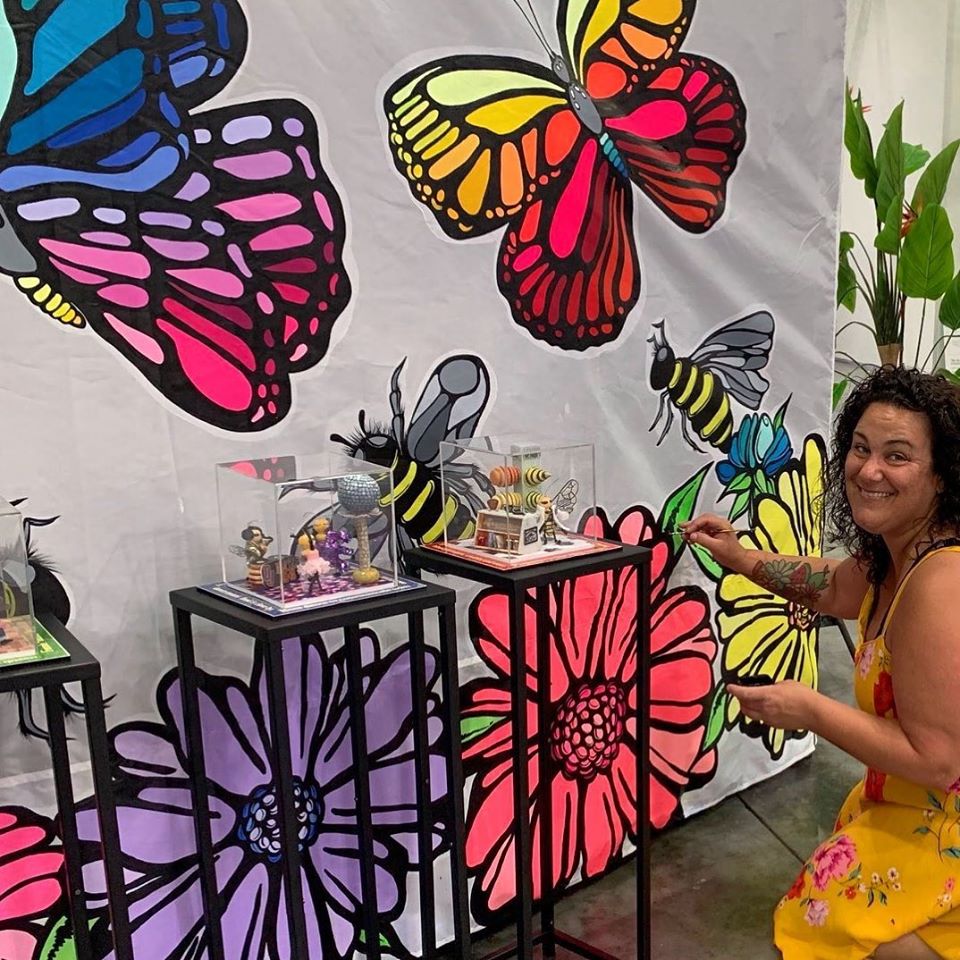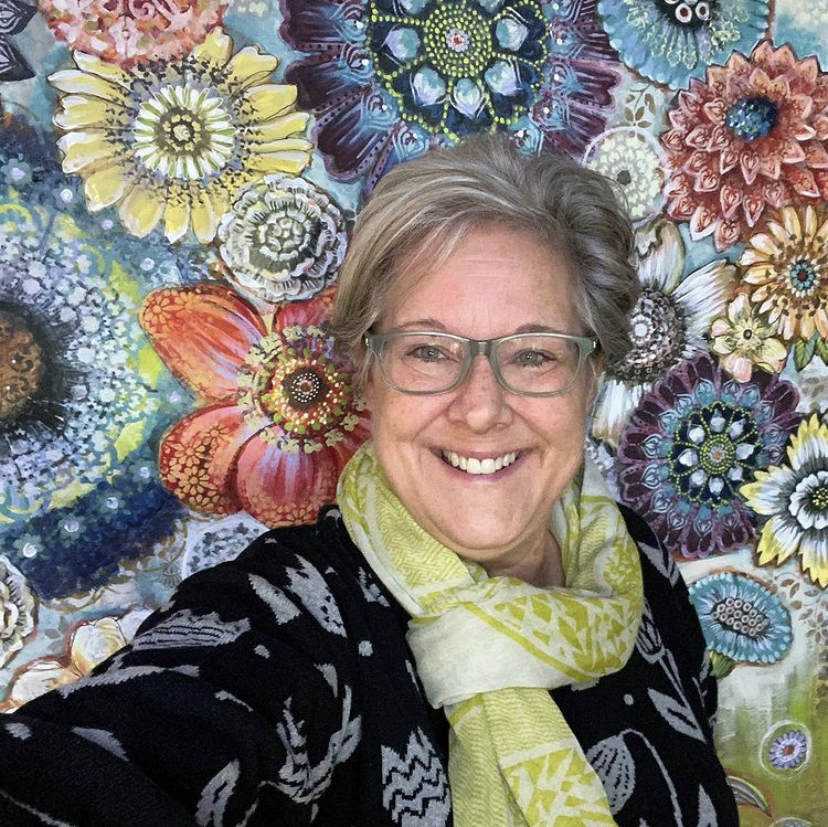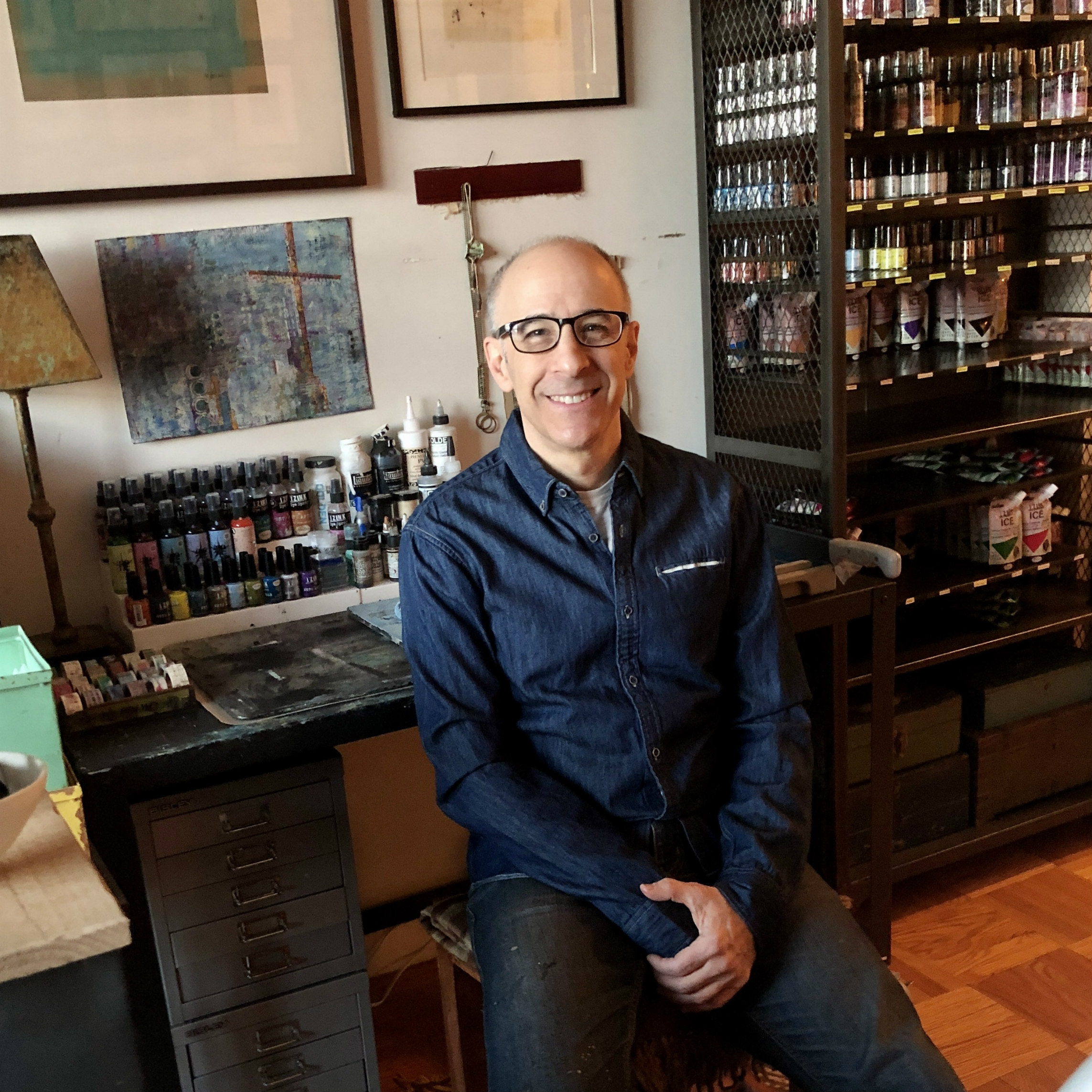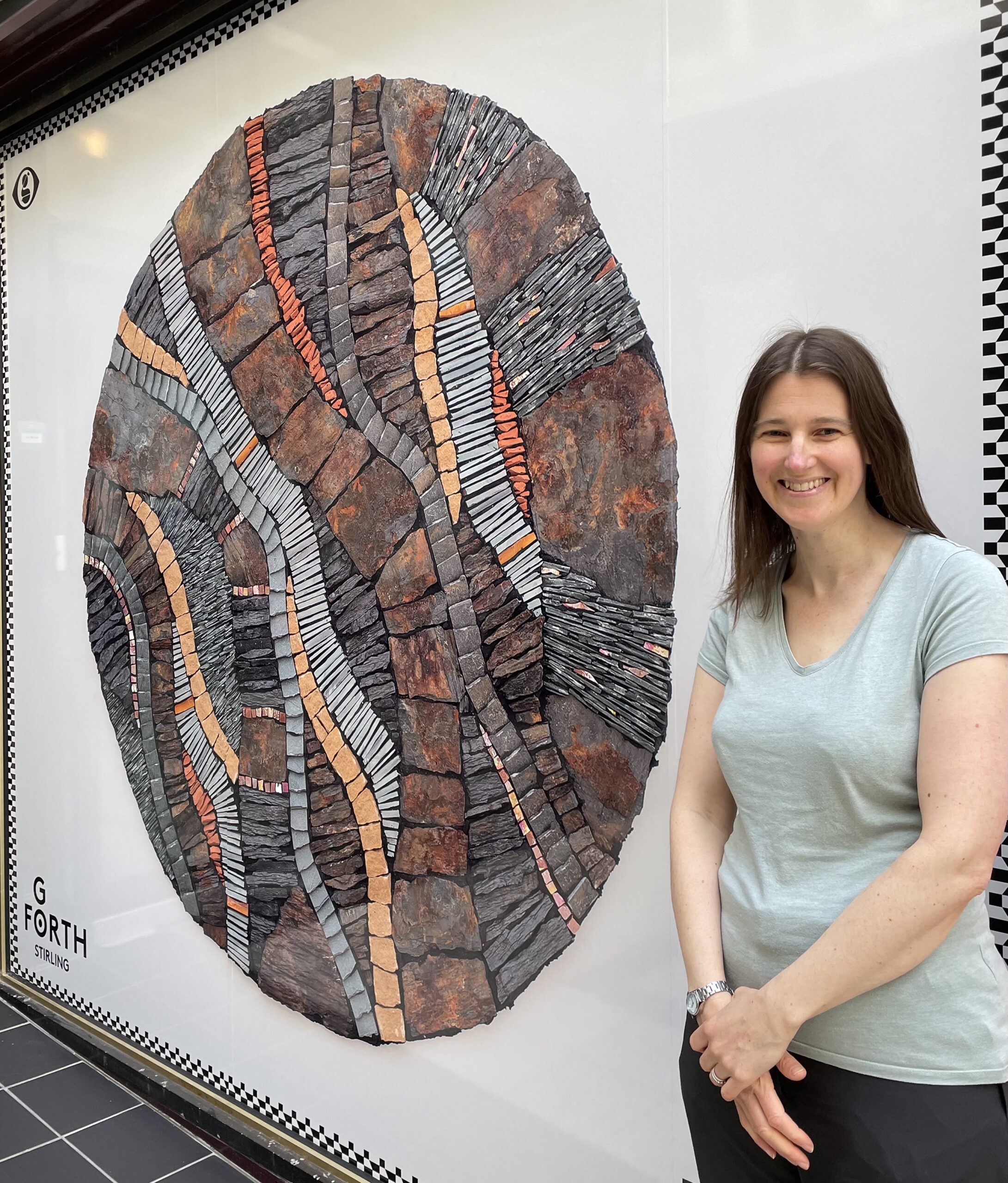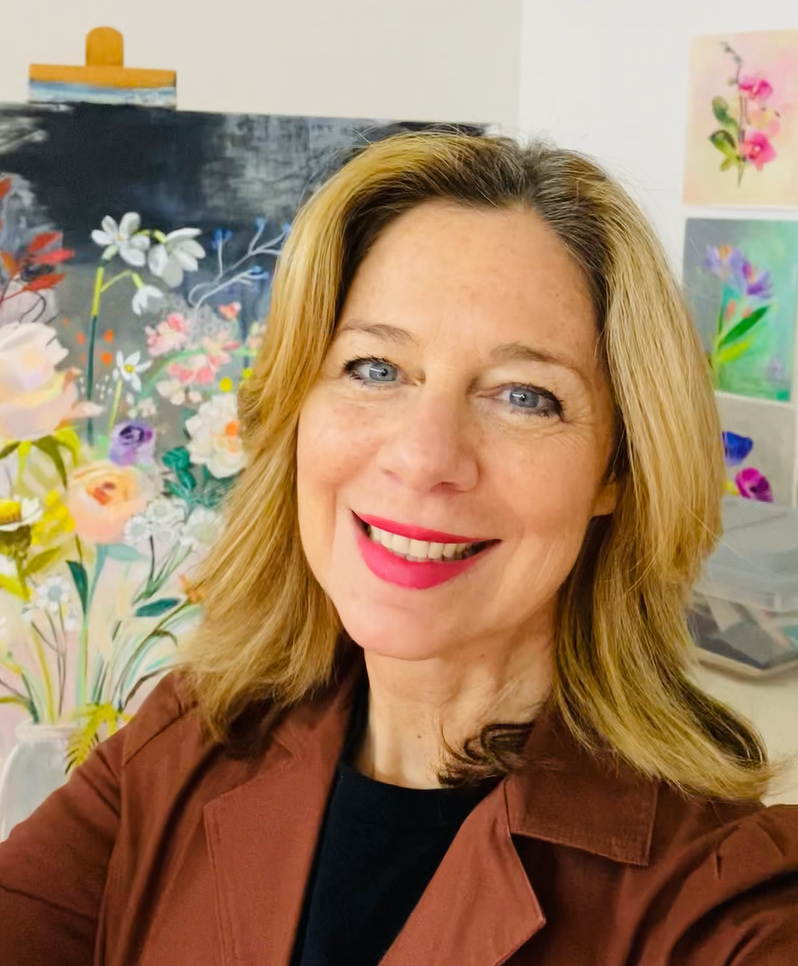#223 Nicole Galluccio: Illustrator and Color Enthusiast
Nicole Galluccio is a painter and illustrator in South Florida. In her paintings, she illustrates flowers, fruits, and pollinators, using bright, bold colors. Nicole is a master at color theory, and uses many shades of each color that she’s mixed herself. In this past year, she’s added teaching to her business as she entered the world of Zoom classes. We also talk about her new studio space and how she benefits from being in a shared space with other artists. You can listen to my previous interview with Nicole in Episode 7 of the podcast. Listen here or download from iTunes, Spotify, Google Play, CastBox, or Stitcher. Nicole Galluccio Paradise Evenflow This is the installation of Nicole's artwork on window clings at the Mandel Public Library in West Palm Beach, Florida. Merch in Nicole's studio Nicole's studio Nicole in her studio. Notice the containers of pre-mixed paint on her work table. I previously talked to Nicole on Episode 7 of this podcast. You can listen to Episode 7 here. Nicole's website is nicolegalluccioart.com. She also uses Nicole Galluccio Art for Facebook, Instagram, and Twitter. Nicole teaches classes through Old School Square and The Lighthouse Center for the Arts. If you're interested in finding out more about Zero Empty Spaces artist studios, here is their website. Here are some great takeaways from our conversation: Nicole uses many, many colors on each painting, and she mixes the colors herself. What makes the colors really pop is the black outlining she does around and in the detail of the flowers. So here’s the takeaway: Practice, practice, practice and you can get good at the outlining in your artwork. Sometimes she works on a large piece and smaller pieces that are part of a collection at the same time. She does this for two reasons: First, you can switch and work on another one while you’re waiting for the first one to dry. And second, if she wants to use the same imagery and colors on a smaller piece, it makes sense to work on both of them at the same time so she has consistency. Because Nicole uses so many shades of each color in a painting, she pre-mixes the colors and stores them in covered plastic containers. She just gets small inexpensive ones at the Dollar Store. She mixes new colors every few months and has them on hand when she’s ready to create. If your style is changing, try transitioning your art rather than abruptly changing it at a new show. Nicole did a solo show and included paintings in her old style, which included mixed papers in their background, and newer paintings which had a painted background. This will satisfy long-term collectors while showing them what you’re doing now. We talked a little about social media and how it’s a free marketing tool for your business. Realize that everything can be cross-promoted now. For example, you can make a video for TikTok, but then you can also have that posted to…
